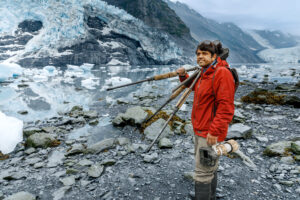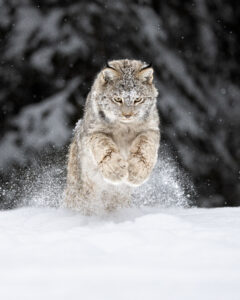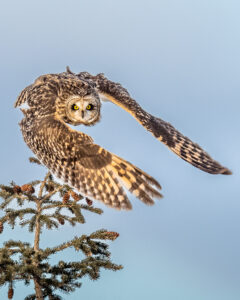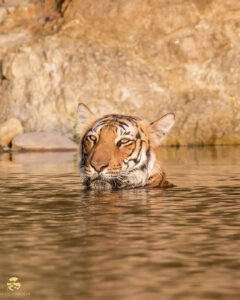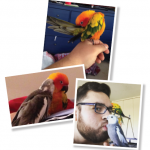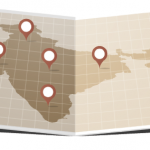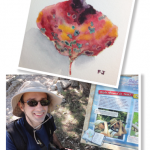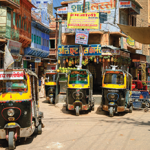Roughly six years ago, Nigil Haroon, MD, PhD, MBA, division head of rheumatology at the University Health Network, Toronto, traveled almost 9,000 miles from his home to Papua, New Guinea. His plan was to photograph the Raggiana bird-of-paradise, which can only be found in the tropical forests of eastern New Guinea.
He spent about two weeks in the forest with a guide, patiently waiting for these birds to fly in and perch on a nearby tree branch long enough for him to aim, focus and snap pictures. He slept in a log cabin without modern conveniences, such as internet connectivity, television or room service.
“Whether the bird came or not was completely a matter of luck,” he says, adding that his patience and persistence were rewarded. He was able to capture several photographs of this magnificent bird.
A self-taught photographer, Dr. Haroon has developed and sharpened the many skills needed for this form of artistic expression. He’s experimented with different cameras, filters and lenses, and developed a keen eye for what makes the perfect photo.
“I like to photograph wildlife,” he says. “My favorite subjects are birds in flight and rare birds. I’m careful not to disturb nature.”
5 Brothers
Although Dr. Haroon’s interest in photography dates to his childhood years, it wasn’t until medical school that he purchased his first professional camera for a class trip. He toured southern India, using his new camera to capture the beautiful forests, palaces and buildings.
Since then, he’s traveled to U.S. and Canadian national parks, Alaska, Africa, Central America, Asia and Oceania to take photos of wildlife and learn about their varied behaviors.
He photographed grizzly bears feasting on salmon during the salmon run at the Katmai National Park and Preserve and Lake Clark National Park and Preserve in Alaska, and in Bella Coola, B.C.
“Bears can be picky about the salmon they eat,” says Dr. Haroon. “There are hundreds of thousands of salmon in the stream, [but] they prefer Chinook salmon to other types [because] they have more fat.”
In recent years, he has also traveled to Kenya several times, photographing lion cubs, elephants, leopards, giraffes, buffalos, zebras and cheetahs. He photographed the Five Brothers, also known as the Magnificent Five, a band of five male cheetahs from three different families. Although these cats typically live and hunt alone, preying on small animals, he says these five banded together for about five years. They hunted large animals, enough to feed all five of them.
“For the first time in history, five cheetahs were hunting together,” explains Dr. Haroon, who spent days studying their behavior. “They had a leader, and each specialized in something and hunted in formation. One would attack the animal’s neck, another the rear leg. They all knew what their roles were.”
Perhaps his most memorable trip was to Yellowstone National Park, Wyoming, in January 2017. He was huddled in the snow on a ridge when he spotted a coyote in the valley below slowly making its way up the valley wall. On that day, the temperature had dropped to a bitter –40ºF. He waited approximately 30 minutes in the frigid cold for the coyote to climb a hill near him. Dr. Haroon managed to snap several photos. Two months later, one was selected by National Geographic as its Photo of the Day. Dr. Haroon’s payment was bragging rights for years to come.
So far, he hasn’t had any close calls with wildlife. The key, he explains, is not to disturb nature, to blend into the environment, even if it means almost turning into a snowman.
Beneficial Purpose
Dr. Haroon probably values his camera as much as he does his stethoscope. He says photography is as challenging as rheumatology and patience is a virtue in both fields. He chose rheumatology based on his love of discovery and finding solutions. His lab has been working toward solving the puzzle of how arthritis develops and progresses. His future goal involves setting up a small production company with like-minded friends to produce short films highlighting mental health, substance abuse, other addictions and family relations.
BACKGROUND
- 2000–03: Residency, Internal Medicine, Veer Narmad South Gujarat University, Surat, India
- 2005–07: Fellowship, Clinical Immunology/Rheumatology, Sanjay Gandhi Postgraduate Institute of Medical Sciences, Lucknow, Uttar Pradesh, India
- 2008–11: Clinical Fellow, Rheumatology, University Health Network (UHN), Toronto
- 2008–12: PhD, Medical Sciences, University of Toronto (Vanier Scholar)
- 2019–21: MBA, Health and Life Sciences, Joseph L. Rotman School of Management, University of Toronto
- 2020: Recognition from University of Kerala, Thiruvananthapuram, India: Distinguished Alumnus Award, Diamond Jubilee Oration
- 2022–present: President, Canadian Rheumatology Association
- 2022–present: Senior Scientist, Schroeder Arthritis Institute, Toronto Western Hospital, Krembil Research Institute, UHN
“Social media sites all want videos,” he says. “It’s more interesting to tell stories through video. Each of our videos could be a conversation with a message.”
Despite the hundreds of photos Dr. Haroon has taken, none appear on the walls in his office. Nor are they for sale. His hobby serves another purpose: stress relief.
“Photography is the best stress reliever,” says Dr. Haroon. “Day in and day out, I care for patients, do clinical and research work, write grants and apply for funding. I hardly get much sleep or personal and family time. But being in nature, looking at the world through that lens is incredible. You have to experience it. That’s bliss.
 Carol Patton is a freelance writer based in Las Vegas.
Carol Patton is a freelance writer based in Las Vegas.
